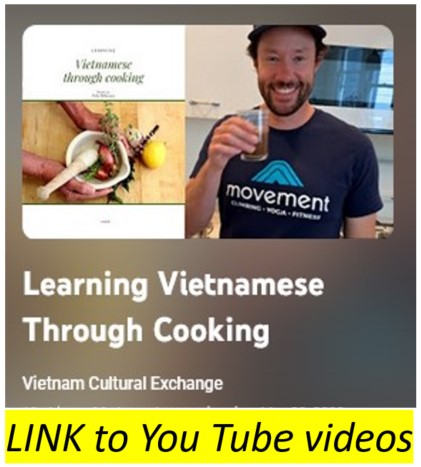 Vietnamese
Vietnamese home
 Vietnamese
Vietnamese
through
cooking
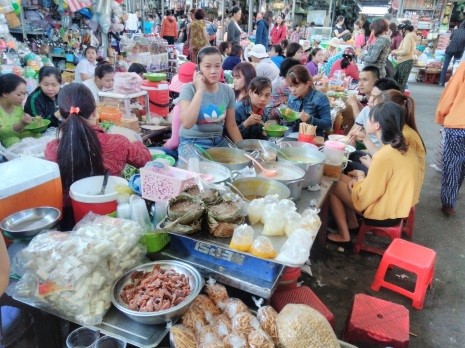
You are going
on vacation..
.
..to a fascinating land far
away. Then what are the three main activities for survival: breathing, drinking
and eating.
This is so obvious that we
hardly think about it. Breathing is quite easy and drinking is also easy
because you can get water, coffee, tea or cola everywhere.
But food! In countries where
the language is a bit similar to yours, you can get by because the food there
is usually very similar to what you are used to.
But in a country where they
speak a language that you can't make sense of… then the delicious smelling food
looks like something you know but it's called different and it tastes
different and what would it contain?
Language
courses on the Internet and what really makes sense to learn
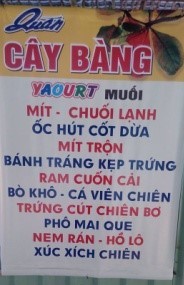
There are many, also for learning Vietnamese. There are also good ones, but it
remains that it is very personal whether a method works for you. There is also
a big difference in what you want to learn, most methods are not suitable for a
short visit, whatever they promise: you will never learn a completely foreign
language in a few months. Does this mean that it makes no sense at all to learn
Most courses pay a lot of attention to
pronunciation and that's great, but is it useful? You can then perfectly
pronounce what is on the menu. The problem, however, is that neither the
vendors nor, rarely, the enthusiastic tour guides know the English names of
what's in the delicious-smelling food you can buy on the street and in the
eateries.
Thanks to the videos and the textbook
'Vietnamese through Cooking' you will not only recognize many of the menu
lists, but also know what it is and what is in it. And in principle you can
also pronounce it reasonably intelligibly and you have learned how it sounds in
fast Vietnamese. In the meantime, several videos have already been published,
but there are many more to come, including a special one about Vietnamese
'Street Food'
'Vietnamees through
Cooking'
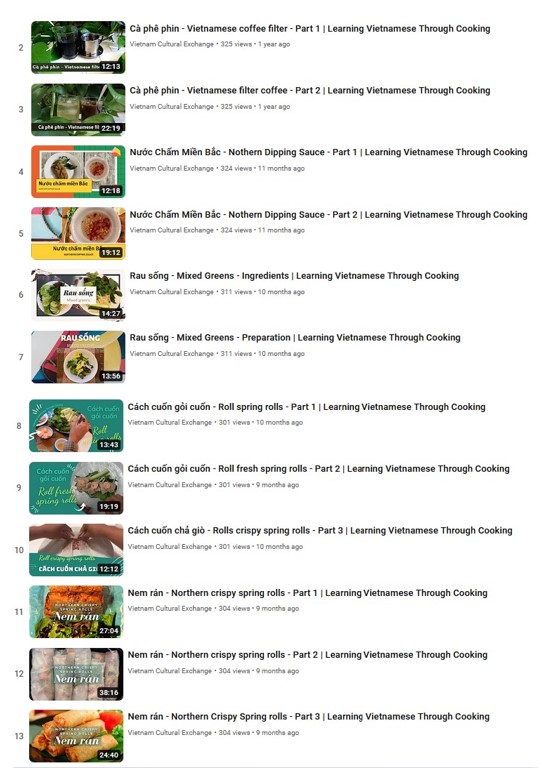
In addition to the recipes, the text book
contains all kinds of cultural information, including about the language. The
funny thing is that the book was even high on the list of 'Vietnamese
Cookbooks', because everything is explained simply and clearly.
But despite its simplicity, the content is very
well thought out. For example, when learning a new language, the vocabulary is
the biggest problem, there are all kinds of methods for that, but we have made
a domino game with the words used to practice the vocabulary of a lesson. On
those pictures is a drawing, the Vietnamese and English text. If you are alone, you
can use them as memory.
videos in Vietnamese
The text is first spoken very clearly and
calmly, you will then see the Vietnamese text and how it sounds. Then the
sentence is spoken faster and finally the sentence is spoken with the
Vietnamese tempo and you lose the thread. It may well be that you do not yet
understand the name of the food in practice, they also have their own
pronunciation locally, but you already see and smell perfectly what it is and
know what it contains. the handbook
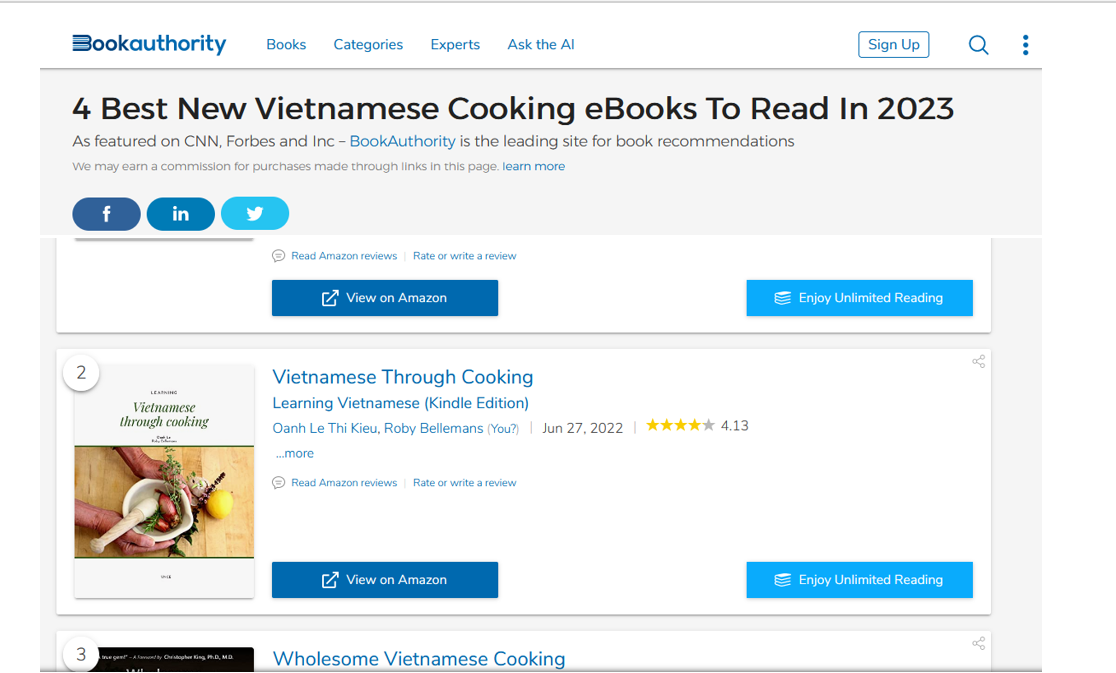
Oanh Le..
In 2019 she then founded the 'Vietnam Cultural
Exchange' organization with the main activity being the 'Bong & Pancake Art
for Children gallery', which is temporarily closed due to covid, but started
again in 2023. During covid, Oanh developed the "Vietnam
Through Food" project together with Roby. Oanh lives part-time in Vietnam
and part-time in the USA. She currently resides in the USA and that is why she
takes into account what you can buy outside Vietnam in her recipes.
